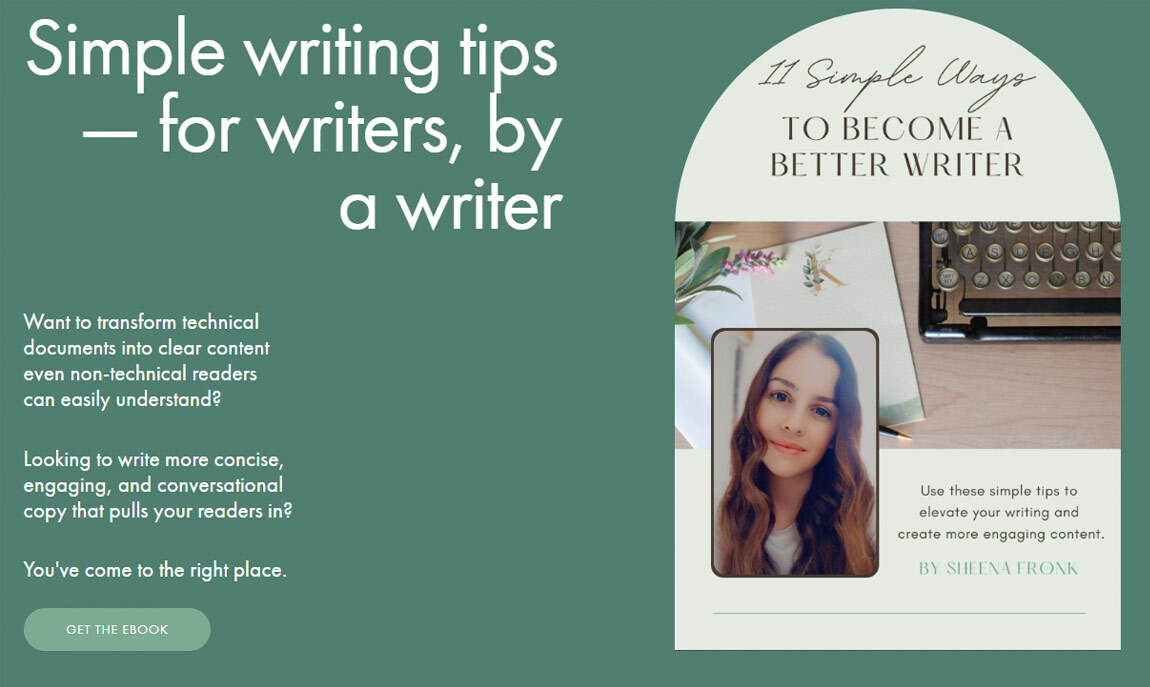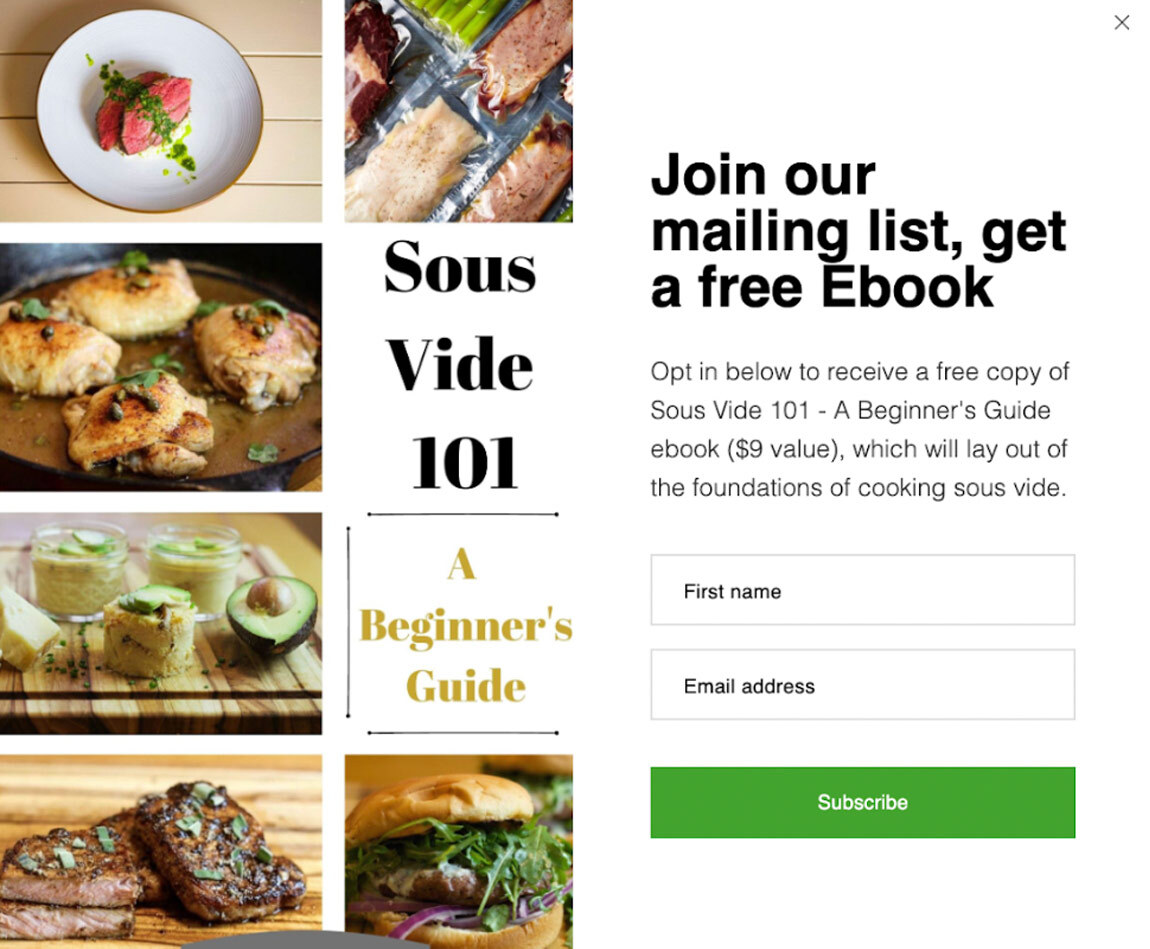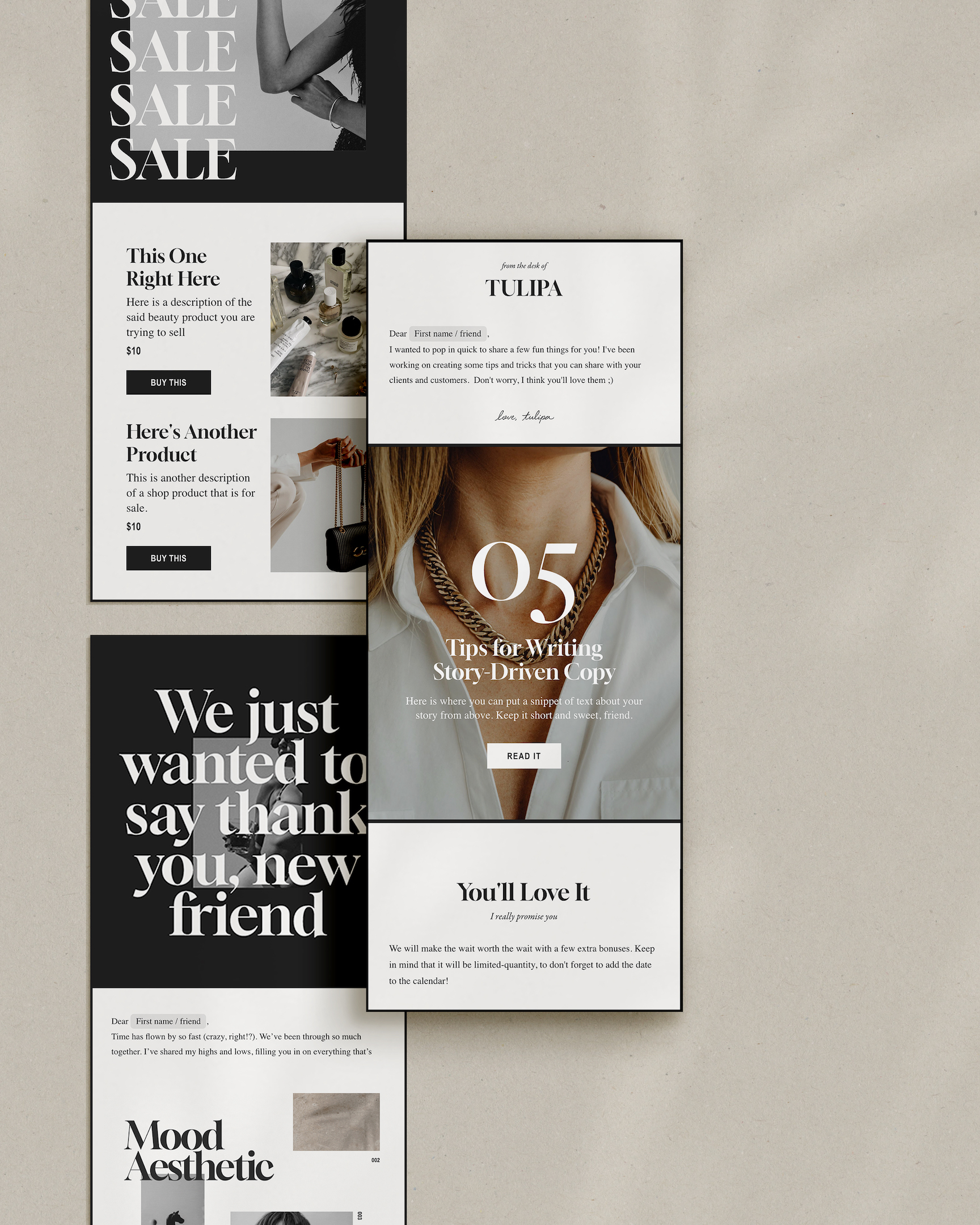How to create an ebook and market it successfully
Table of Contents Jump to:
Jump to:
Table of contents
TL;DR: Need a comprehensive guide to creating and selling your ebook? Read on to explore ebook types, formats, and FAQs.
Thinking about creating an ebook? If you have a wealth of knowledge or experience you want to share with the world, have a story to tell, or simply want to try your hand at creating an ebook, we’re here to help.
But how do you actually create one?
It’s nowhere near as hard as it may seem, but the key is being prepared and having a plan. We’ll show you not only how to create an ebook but how to market it successfully, too.
While we can’t guarantee that you’ll become a bestselling author or an overnight success raking in thousands of dollars, we can assure you that if you follow the steps in this article, you’ll finally finish your ebook and see it lining digital shelves before you know it.
Get unlimited email sends and subscribers with Flodesk
We’ll never increase pricing because your email list is growing
Six types of ebooks
Before you start your ebook, you’ll need to decide which type you want to create. Start by asking yourself:
- Do I want to write a fiction or nonfiction ebook?
- Do I want to sell my ebook or offer it as a freebie?
When it comes to paid versus free ebooks, you can think of paid versions as your core digital product. Freebies are marketing tactics used to generate interest and grow your email list. These are typically a cut-back version of your ebook (a few chapters or pages to entice readers to buy the full version).
After you’ve figured out the above, narrow it down even further and determine which type of ebook you want to create. Need some inspiration? Here are a few we love.
1. Novels, short stories, and novellas
If you want your ebook to be fiction, these are your best options. The main difference between the three is generally the length.
- Novels are typically between 50,000 and 110,000 words
- Novellas are often between 10,000 and 40,000 words
- Short stories tend to be anywhere from 1,000 to 10,000 words
Regardless of which option you choose, try to follow the traditional structure to tell a compelling story that goes beyond “beginning, middle, end.”
A simple (but effective) story arc usually flows along these lines:
- Introduce your protagonist (the hero of your story)
- Meet their enemy or a challenge they must overcome
- Have your hero overcome that enemy
- Show your protagonist emerging transformed from the experience
If you study great stories, you’ll likely notice some commonalities: they start with life as normal, life upturned by some event, and finally, back to some form of normality.
Marketing tip: These simple story structures can also be a great source of inspiration for creating marketing content to sell your ebook (or just about any physical or digital product). For example, your protagonist is the reader—your potential customer. Their enemy is the problem they’re seeking a solution for. Your ebook or product is how they overcome it, and the resulting transformation is evidenced by their reviews.
2. Instructional books
Instructional books are one of the most common nonfiction ebooks you can write. They include how-to guides, personal development books, and self-help books.
These might start as a collection of blogs or even social media content you’ve shared. Whatever their roots, these books offer your insights and allow you to provide direct advice to readers.
Often, you’ll choose one specific topic to cover per book. A few examples could be:
- Conquering social media
- Learning about financial investing
- Teaching sales tactics
- Overcoming specific setbacks or challenges
3. Cookbooks
If you’re a foodie or food blogger, cookbooks are a natural fit since you probably already have all the material you need for your very own digital cookbook.
Pull together your favorite recipes, throw in some professional-quality photos, et voilà! One cookbook, ready to order.
This is a great opportunity to cater to a specific niche too, and even release a series of ebooks covering different categories, including:
- Vegan recipes
- Air-fryer recipes
- Succulent meat-smoking recipes
- Paleo recipes
The only limit is your palate and culinary expertise or preferences.
4. Blog collection
Do you have a long-running blog with regular readers? It may be time to gather your best posts and evolve them into an ebook collection.
Now, selling this well is going to take more than copying and pasting your existing content into an ebook template. Readers will likely expect additional insights and asides, maybe even a few new chapters exclusively available within the ebook, so consider what you can add to make it valuable enough to purchase.
Of course, that’s not to say that simply gathering together all your blogs on a certain topic isn’t valuable enough to stand on its own. But if you want this ebook to take off and you have more to offer, now’s the perfect time to incorporate it.
5. Biographies
People love to peek behind the curtain. If you already have a following, or if you know someone who does, you might be perfectly positioned to create a biographical ebook.
Remember that much like with writing fiction, readers will expect some level of predictable storytelling beats—a solid beginning, middle, and end, and ideally some form of transformation and character development.
Writing this type of ebook may start as something of a brain dump, but be sure it doesn’t stay that way when you start editing.
6. Poetry
Our final entry has a foot in both worlds, as poetry can quite comfortably be both fiction and nonfiction. And this (rather poetically, I might add) is beautifully reflective of the fluidity of writing: reality feeds fiction and vice versa. They are often entwined—a lesson worth remembering when creating ebooks of any genre.
How to create an ebook in eight simple steps
I remember an uncle congratulating me on the release of my first book and calling it a Herculean effort. That’s what’s ahead of you now—a challenge that many consider impossible, and yet, absolutely within your grasp.
So long as you have a plan and are committed to that plan, you can create an ebook before you know it. And that plan should follow these steps:
Step 1: Choose a topic
Fiction or nonfiction, you need to pick a topic for your ebook. There are two key points this topic should hit on:
- It should be something you’re excited to write about
- There should be an audience who’ll want to read it
There’s a common adage that you should write the book you wish existed. It’s as true for fiction as nonfiction, but in the nonfiction world, it can best be interpreted as “write the book your reader wishes existed.”
Consider the goal of your ebook. If you’re creating an ebook to attract customers to your company, that ebook should be highly relevant to your industry and, more specifically, to your services.
Look to what you’re an expert in (or what your company specializes in) and center your ebook around that.
There’s an infinite number of topics you can choose from—what you settle on will depend entirely on your goals and audience. Hopefully, you’ve already done some legwork to understand who your ideal reader (or customer) is. If not, search for answers to the following market research questions:
- Who is your target reader?
- What are they struggling with?
- What do they want?
- What are they afraid of?
- What language do they use?
- Why are existing ebooks or solutions not working for them?
- How suitable is your ebook for them?
- How will your ebook make their lives better?
You’ll find all the insights you need online in places like social media, polls, forums, SEO keywords, and blogs. These questions are best suited if you’re creating ebooks in the nonfiction category, but you can easily adapt them to fit a fiction author too.
A great way to discover how good your ebook topic is and what your ideal reader wants (or doesn’t want) is to study the reviews for similar ebooks that already exist. You can use those insights to help shape your book to be exactly what readers want.
Step 2: Outline the structure of the book
To create your ebook, you’re either going to repurpose your existing content or create content from scratch. Either way, you should be creating an outline before you start writing your first draft.
Can you get away without outlining? Absolutely—but it’s harder. Fiction authors who do this are often known as “pantsers” because they’re seen to be winging it, flying by the seat of their pants.
There’s nothing wrong with this approach. But realistically, if a piece of writing is important to you (as creating an ebook should be!) then it deserves an outline.
All your outline needs to cover is the broad strokes of where your ebook is going from the first page to the last. The level of detail you go into is up to you, but the point is always the same: to help your ebook read smoothly, stay on track, and guide the reader through the story you want to tell or the message you want to share.
Pro tip: Write down a short thesis for your ebook (a sentence or two) to explain the purpose of your ebook and why readers should care. This will help you keep your outline concise and relevant.
Step 3: Write fast, edit slow
Writer’s block. It’s real, it’s daunting, and it’ll make you tear your hair out. Nothing is worse than staring at a blank page and hoping for words to appear—except perhaps writing and rewriting the same page, paragraph, or word a thousand times over without satisfaction.
This step is the key to beating writer’s block, and it couldn’t be simpler: just keep writing.
You need to see writing and editing as two separate tasks. When you’re in writing mode, the goal is to get words on the page and nothing else.
At most, allow yourself room to pause for a moment of reflection or change the odd word as you go, but that’s it. Don’t sit there agonizing over word choice or perfect syntax, just get the words down. Write now, polish later.
Pro tip: Give yourself the freedom to step away from the screen if the words really aren’t coming. Sometimes a short break is exactly what you need to kick-start your writing muscles.
Step 4: Market your ebook
Trust me, marketing is not a job for later. Make it as high a priority as creating your ebook—you’re only setting yourself up for failure if you don’t.
This step is so vital that we’ve devoted an entire section to it after these how-to points. So for now, we’ll keep this brief and highlight why this is also featured here in these “how to create an ebook” steps.
While you’re planning, writing, and creating your ebook, you have a unique opportunity to create content that documents the process. People love this kind of content—we all love to see something transforming or being created. Miss this opportunity and it won’t come again.
Marketing should be as much a part of creating your ebook as writing it is. We’ll take a deeper look at how to do this in the “How to market and sell your ebook” section of this post.
Step 5: Edit
Editing is where the real magic happens. It’s where you’ll turn a wordy or unorganized draft into a mighty sales-worthy ebook. It’s where you’ll cut fluff and jargon, tighten up your thoughts and presentation, and strengthen your arguments and syntax.
In short, editing is where your ebook becomes a masterpiece.
Here are some pro editing tips to help transform your ebook:
- Hire a professional. This can get expensive, but if you aren’t a writer or editor by trade, it’s a must. If your budget is limited, consider a less experienced editor or some editing software.
- Don’t edit your ebook right after writing it. Give yourself some distance from your ebook so you can come back to it with fresh eyes.
- Read your content aloud. This gives you a clear idea of how well it flows and which sentences need tweaking.
- Cut any unnecessary “fluff” words and jargon. Reading aloud will help identify them (hint: there’s more than you think!).
- Find “beta readers” to read an advanced copy and provide detailed feedback on what they liked and didn’t like.
- Ruthlessly question whether each chapter, scene, paragraph, or sentence belongs in your ebook. If the answer is no, cut it out.
- Keep anything you cut out in a separate document—it’s still content, and you might find a use for it elsewhere.
- Consider adding a call to action (CTA) anywhere it’s appropriate—even fiction authors use these in their closing acknowledgments to urge readers to follow their social channels or join their email lists.
- Learn when to stop editing. There is no such thing as a perfect book, so get comfortable with a “best version” of your book and publish it.
Step 6: Format
A short but crucial step: make sure you format your ebook correctly. The “correct” format depends on where you’ll be selling your ebook and how readers will read it.
The simplest option is PDF. You can save a Word document or Google Doc as a .pdf file and then upload it to your website or a dedicated sales page like the ones you can create on Flodesk Checkout. Or, you can set up a product delivery email to send the PDF ebook to your email subscribers.
If you want your ebook customized for e-readers and able to adapt to any screen size, use a converter to create an EPUB file. Calibre is one of the most commonly used converters, and it’s free.
The key to using any of these converters is the same: make sure your document is smooth, professional, and accessible. How you do this varies based on the word processor you’re using, but here are some essentials to tick off:
- Format your chapter numbers and titles as headings
- Include a table of contents in the ebook’s front matter (the pages before the book content begins, where you often see copyright info, dedications, and the like)
- Format your paragraphs as “justify” so that every line is the same length
Whether you use Calibre or another ebook creation software like Amazon’s Kindle Create, it’s easy to spot if you’ve formatted your ebook correctly. If you can jump to the start of each chapter through the table of contents and your paragraphs all have a uniform line length, you’re probably good.
Check your ebook on an e-reader or e-reading app on your smartphone to ensure it all looks professional; you don’t want people putting your book down just because it doesn’t appear to be carefully created. If you’re struggling, the internet is full of free ebook templates to help you nail your book’s formatting.
Step 7: Create your ebook cover
Unless you’re a talented graphic designer, don’t attempt to create your own ebook cover.
It’s remarkably easy to spot a DIY cover, and having one foreshadows potentially cheap and lazy content within.
Plenty of online advice advocates using Photoshop, Canva, or some similar tool to create your own, but I urge you to avoid that route if you want your ebook to succeed and be taken seriously—again, unless you’re especially talented with design work.
I cannot recommend hiring a cover designer enough. Even if you’re working with a shoestring budget, there are plenty of skillful designers available in places like Fiverr who will create an ebook cover you’ll not soon forget.
Step 8: Publish your ebook
Before you jump into publishing, perform a thorough review of everything. Put yourself in the reader’s shoes, judge your cover critically, and read your ebook front to back (both out loud and in your head).
When you’re completely satisfied that your ebook checks all the boxes of a professional release, it’s time to publish it!
How you publish your ebook depends on your intentions:
- If it’s a lead magnet to build your email list, create a dedicated landing page with a sign-up form and set up a product delivery automation to email subscribers their copy.
- If you’re selling ebooks through your ecommerce store, make sure you’ve created a product that customers can view, purchase, and download immediately.
- If you’re selling your ebook through an existing online marketplace like Amazon, add your ebook to their KDP program, hit publish, and it’ll be available to buy worldwide within 72 hours. Or you can use Flodesk Checkout to create a sales, checkout, and delivery page that goes live once you hit Publish.
These are just a few options, but they cover the three main ways you’ll publish your eBook: on a marketplace, through your own ecommerce store, or as a freebie.
Now you’re in for a world of focused marketing fun.
How to market and sell your ebook
Creating an ebook is only half the battle. Next comes the hard part: marketing.
I call it the hard part because chances are you’re not a full-time marketer as well as a creative. But don’t fret, follow these steps and you’ll be on the right track and ticking all the necessary boxes for success.
Create a dedicated ebook landing page
A dedicated landing page for your ebook is essential, whether you’re selling it on your website, giving it away for free, or listing it on an online marketplace like Amazon or Gumroad.
It’s where you’ll describe your ebook, showcase your best reviews, and convince readers they should care about reading it.
If your ebook is a freebie designed to build your email list, this landing page is where you’ll collect their details. Then, your email marketing software will deliver the product directly to them.
If you’re selling your ebook through an online marketplace, you’ll use this landing page to direct your website visitors to that marketplace so they can purchase your ebook.
Or, if your website is an ecommerce store, then your ebook landing page will be where you directly sell to your customers, much like our content marketing manager Sheena has done here using Flodesk Checkout:
Read our ultimate guide to Flodesk Checkout for more information or check out our favorite sale page templates!
Create a sales and checkout page to sell your products effortlessly
Monetize your content and accept payments with beautiful checkout flows. No platform fees.
You’d have to blatantly ignore what’s going on with social media to not see its sales potential. Why else would 73% of sales reps who use social media in their sales process outperform those who don’t?
But how exactly do you promote on social media?
It’s pretty simple: Don’t make it all about you. Too many hopefuls take to social media and throw out a stream of posts begging people to buy their digital products. What happens? They hear crickets chirping, get frustrated, and give up.
Successful social media marketing requires more finesse than that. You need to invest time into it and build relationships. In short, you need to focus on building a community, not a following. Do this by:
- Spending time talking to people on your chosen platform. Show an interest in what they’re posting by leaving meaningful comments.
- Avoiding the urge to talk about yourself for as long as possible.
- Sharing posts related to what you’re doing, but not trying to sell what you’re doing. At most, you should be trying to actively sell your ebook once every ten posts—yes, you read that right.
- Committing to long-term effort and consistency. A strong and supportive community isn’t going to spring up overnight.
This is an all but essential step in any kind of book marketing. Make this as high a priority as creating your ebook.
Document your creative process
We touched on this earlier because if you fly through creating your ebook without doing this, you’ve missed an opportunity.
This marketing tactic has been popularized by the incomparable Gary Vaynerchuk, who often exclaims passionately that you should “document, not create.”
People love transformative stories; we always have and always will. The process of creating your ebook is exactly that. It’s the story of how a blank page became an ebook, and it’s the story of how you became an author, achieved a goal, overcame challenges, and maybe even grew as a person.
That’s a social media goldmine.
Share content on your socials that shows how you’re creating your ebook, offers tips on what you’re learning, or even just shows the process unfold in a timelapse. By doing this, you’ll be ticking off the “promote on social media” marketing tip long before you’re ready to sell your ebook.
This can also lead perfectly to other marketing tactics. You can use this momentum to figure out what other social content to share, build an email list of interested readers, and prepare for a successful launch day.
Plan your launch
If you’ve been building momentum for the release of your ebook and creating a community of supporters (like we covered in the last two steps), you’ll be in a great position for this.
A successful product launch is as important as the product itself. You want your ebook to hit the ground running, so to speak, and that means you’ll need a few things:
- Early reviews: Reach out to people who’ve expressed interest in your ebook and offer them an advanced review copy (ARC). Most authors offer these for free in exchange for the promise of an honest review on the day of release.
- A “street team”: These will be your dedicated advocates—people who will tell their friends, family, social communities, and just about anyone who’ll listen to grab a copy of your ebook the day it’s released.
- Influencer power boost: Add some rocket fuel to your launch by convincing bloggers and influencers to share posts about your ebook in the build-up to release day as well as on the day itself. Some might charge you, others may be persuaded by a free copy—it’s up to you to decide what you’re comfortable with.
- As many day-one sales as possible: This is where social media and email marketing unite to make sure everyone even remotely interested in your ebook grabs their copy on release day. Check out our product launch email templates to make announcing your launch easy, or read our post “How to write a product launch email” to create your own.
Leverage email marketing
We’ve already touched on a few aspects of email marketing and how it can help you successfully market your ebook. Still, large and small business email marketing is our bread and butter, so it deserves a dedicated section.
Besides choosing the right email service provider for you, our best advice is to get started on building your email list ASAP. The best way to do this is by creating a lead magnet—a freebie that anyone interested in your content can obtain by giving you their email address. Check out this perfect example by Sous Vide Ways:
As we’ve covered, you might be creating this ebook to be a lead magnet, but if you intend to sell your ebook instead, a free sample of it could be the perfect lead magnet for you. Here’s how you might set that up:
- Create a landing page with a sign-up form.
- Create an email that will be sent to anyone who completes the sign-up form and include the free sample.
- Set up an automation workflow in your email provider so it knows to send that email to anyone who signs up via your new landing page form.
- Share the landing page in social media posts, blogs, ads, and any other platform you have access to.
And remember to keep your email list engaged. Don’t let them forget about you: send them emails that will entertain or keep them informed of important events (like your ebook being available for pre-order or the release date). Check out our teaser email campaign examples and our tips on attention-grabbing email marketing graphics for inspiration.
Combine email marketing with building a community on social media and you’ll have two of the most powerful digital marketing tools working hard to successfully market your ebook to the world.
Get unlimited email sends and subscribers with Flodesk
We’ll never increase pricing because your email list is growing
FAQs
Is it expensive to create an ebook?
It is not expensive to create an ebook. In fact, most of the tools you’ll need are free to use. The greatest expense you’ll face is the time you spend and the cost of hiring a cover designer, and perhaps an editor.
What software do I need to create an ebook?
You’ll need a word processor—you can’t go wrong with Microsoft Word or Google Docs—and possibly an ebook converter like Calibre or Kindle Create.
What types of ebooks sell the most?
Fiction, business, and self-development ebooks tend to sell best.
How long should ebooks be?
There is no cut-and-dry answer to this, but here are some averages to guide you:
- Novels: 50,000 to 110,000 words
- Novellas: 10,000 to 40,000 words
- Short stories: 1,000 to 10,000 words
- Nonfiction ebook: 10,000 words
- B2B ebook: 2,500 words
What file format is best for your ebook?
The best ebook file format depends on how you distribute it and how readers will view it.
- PDF: Best format for ebooks that will be read on a computer and promoted/sold on your website rather than Kindle or iBooks.
- EPUB: A flexible format that adapts the ebook’s text to fit the screen it’s viewed on. Ideal for e-readers and phones alike, making this your best choice for all-around use.
- MOBI: A largely retired ebook format that you probably want to avoid.
- AZW: An ebook format designed specifically for reading on the Amazon Kindle device and mobile app.
- IBA: An ebook format for use with the Apple iBooks app.







